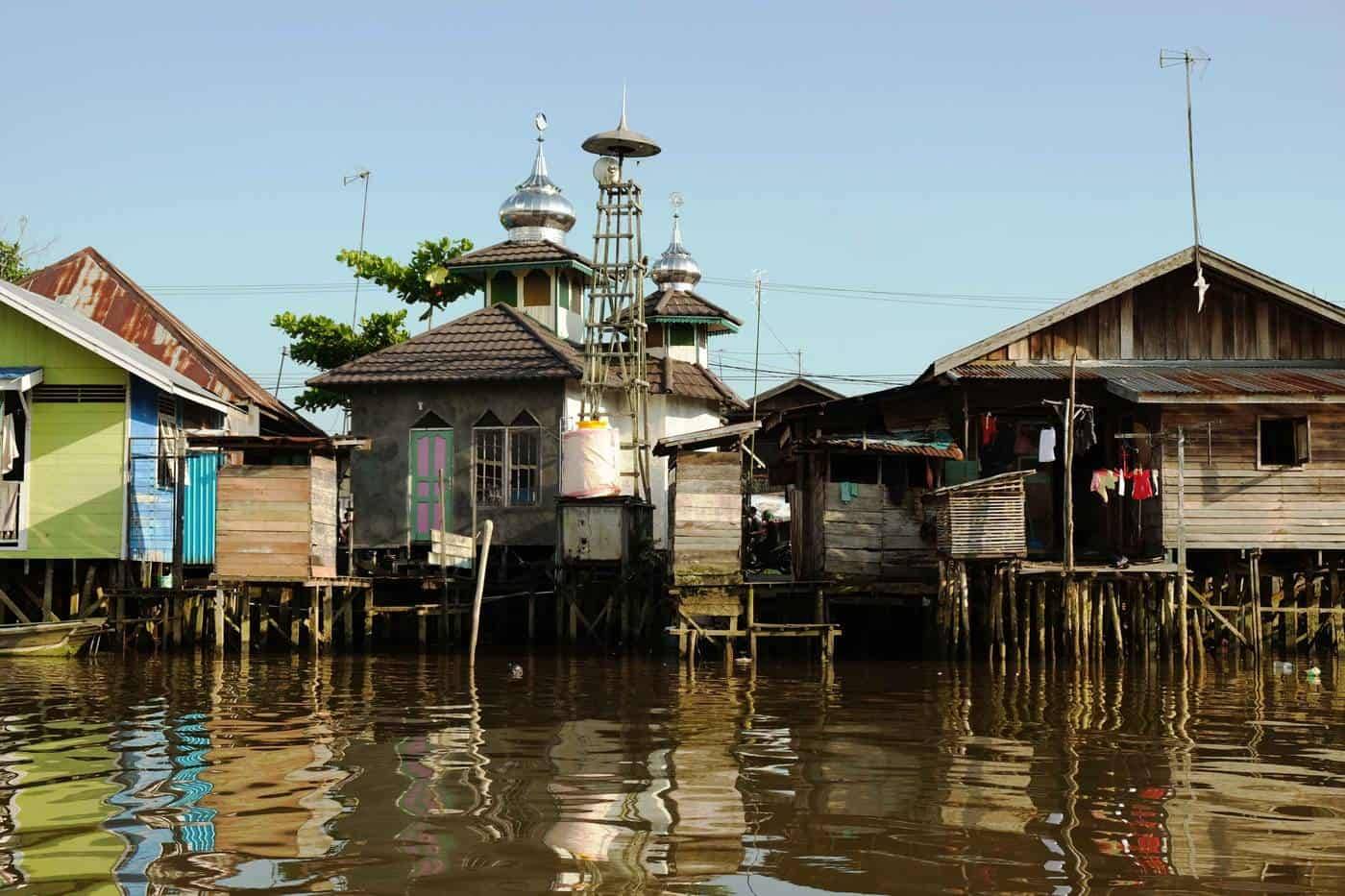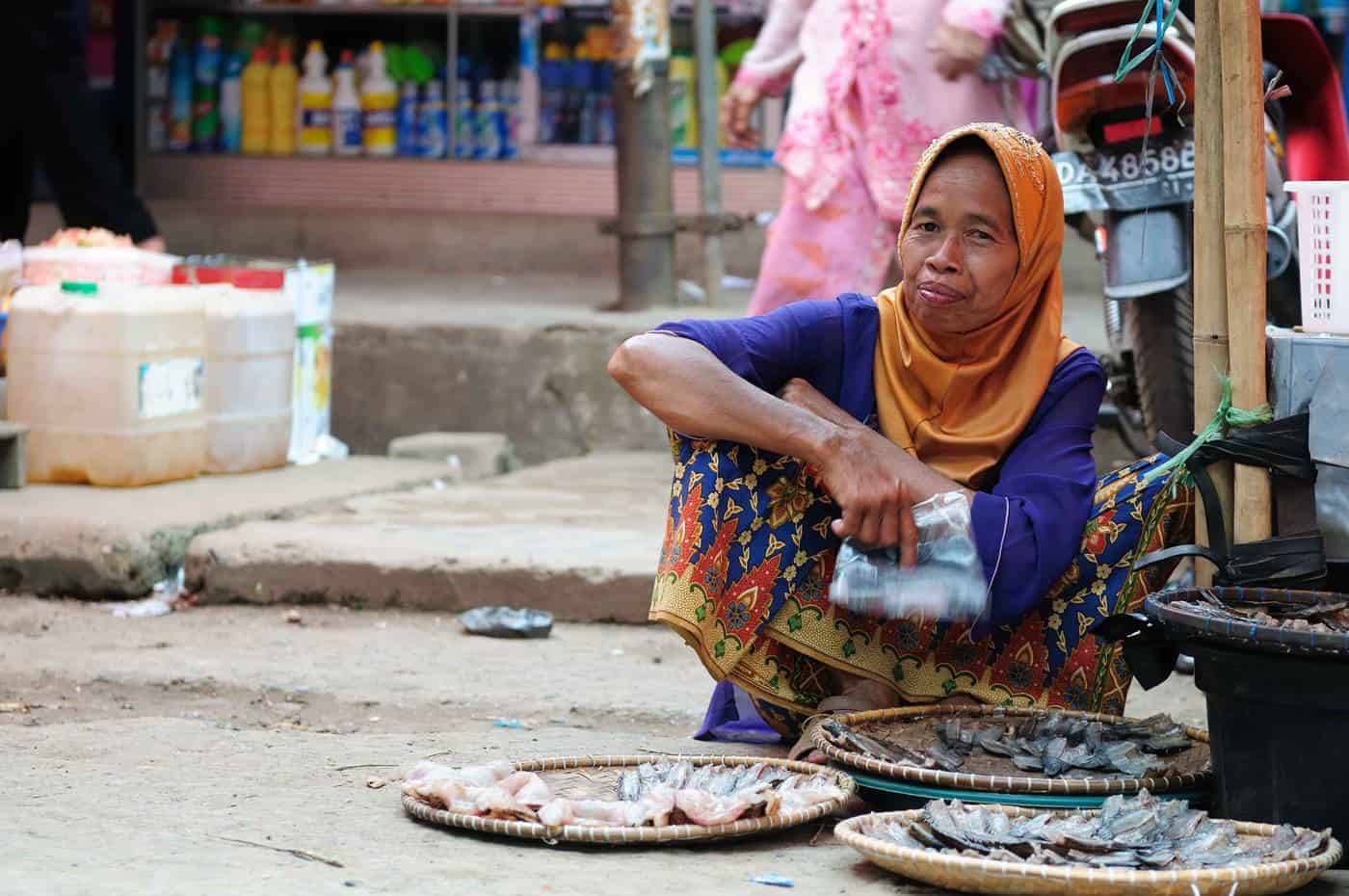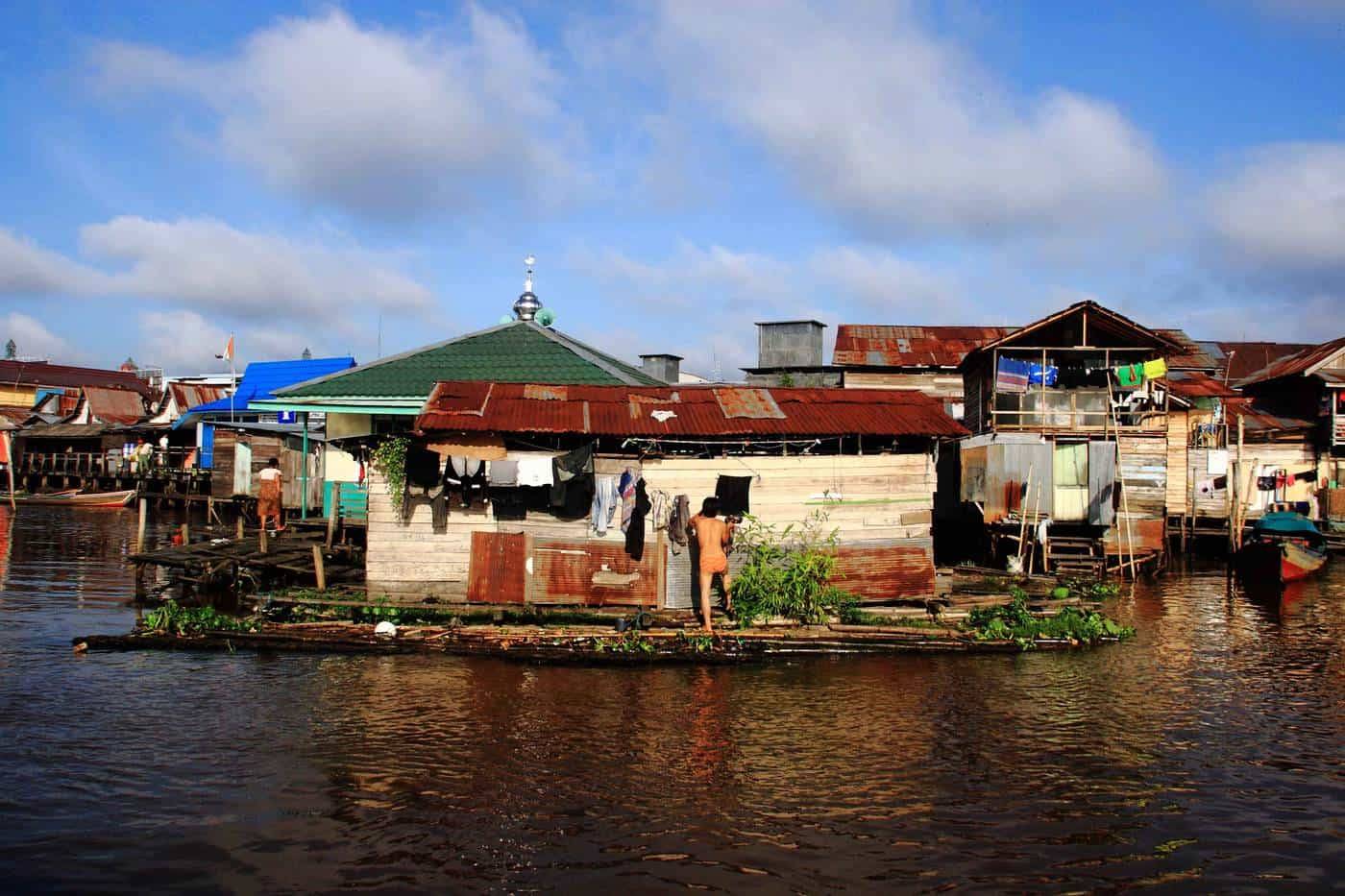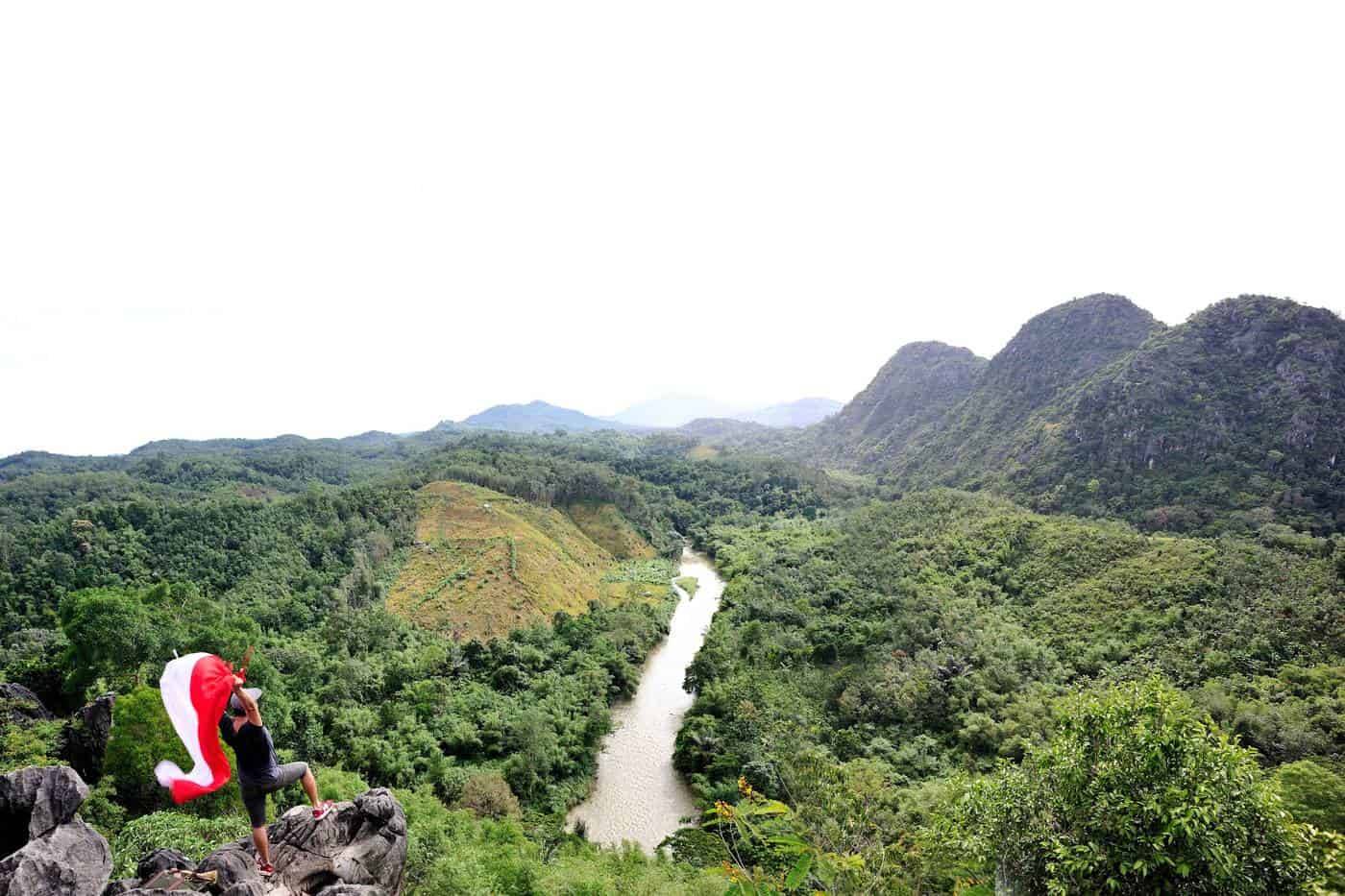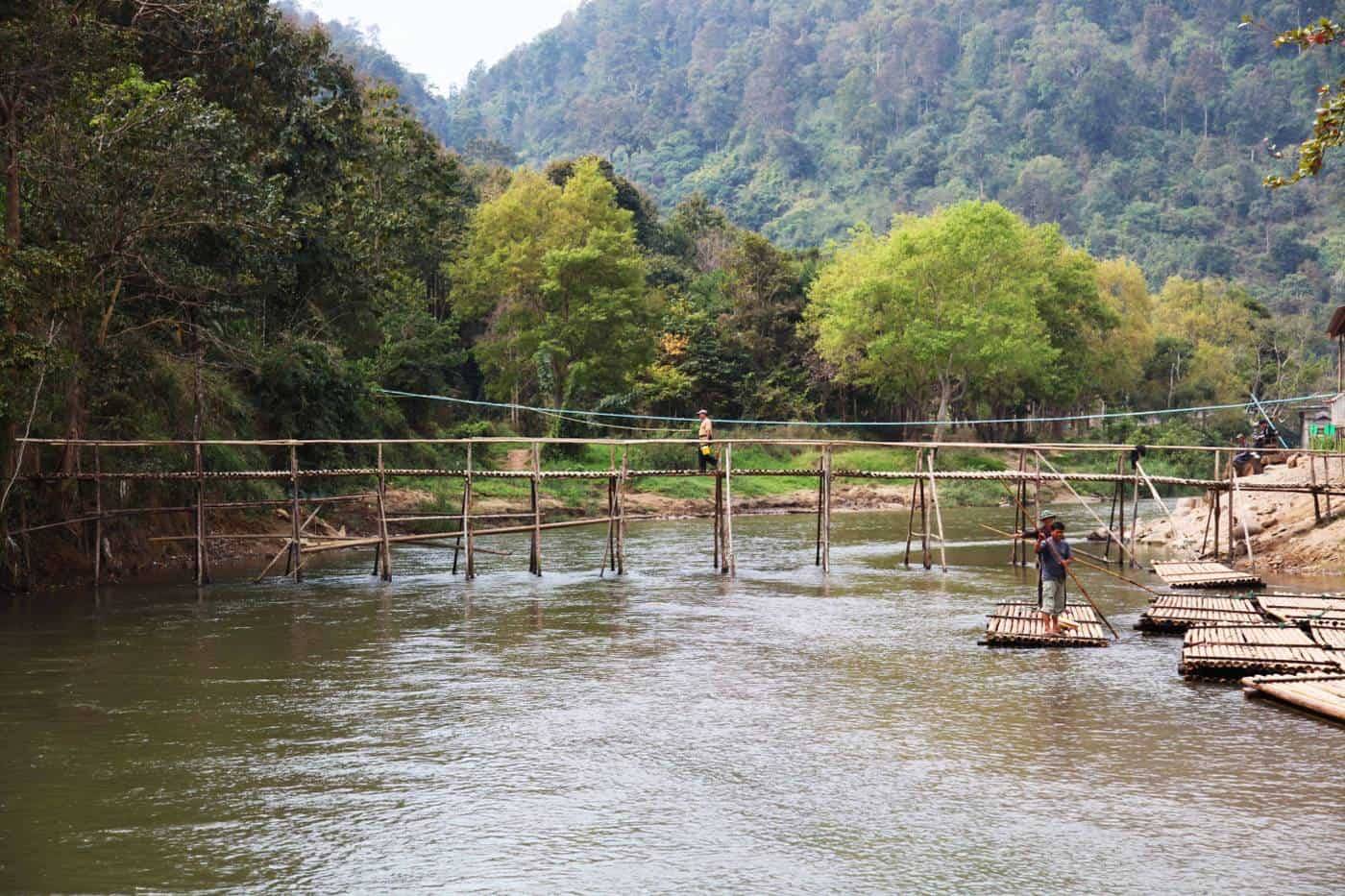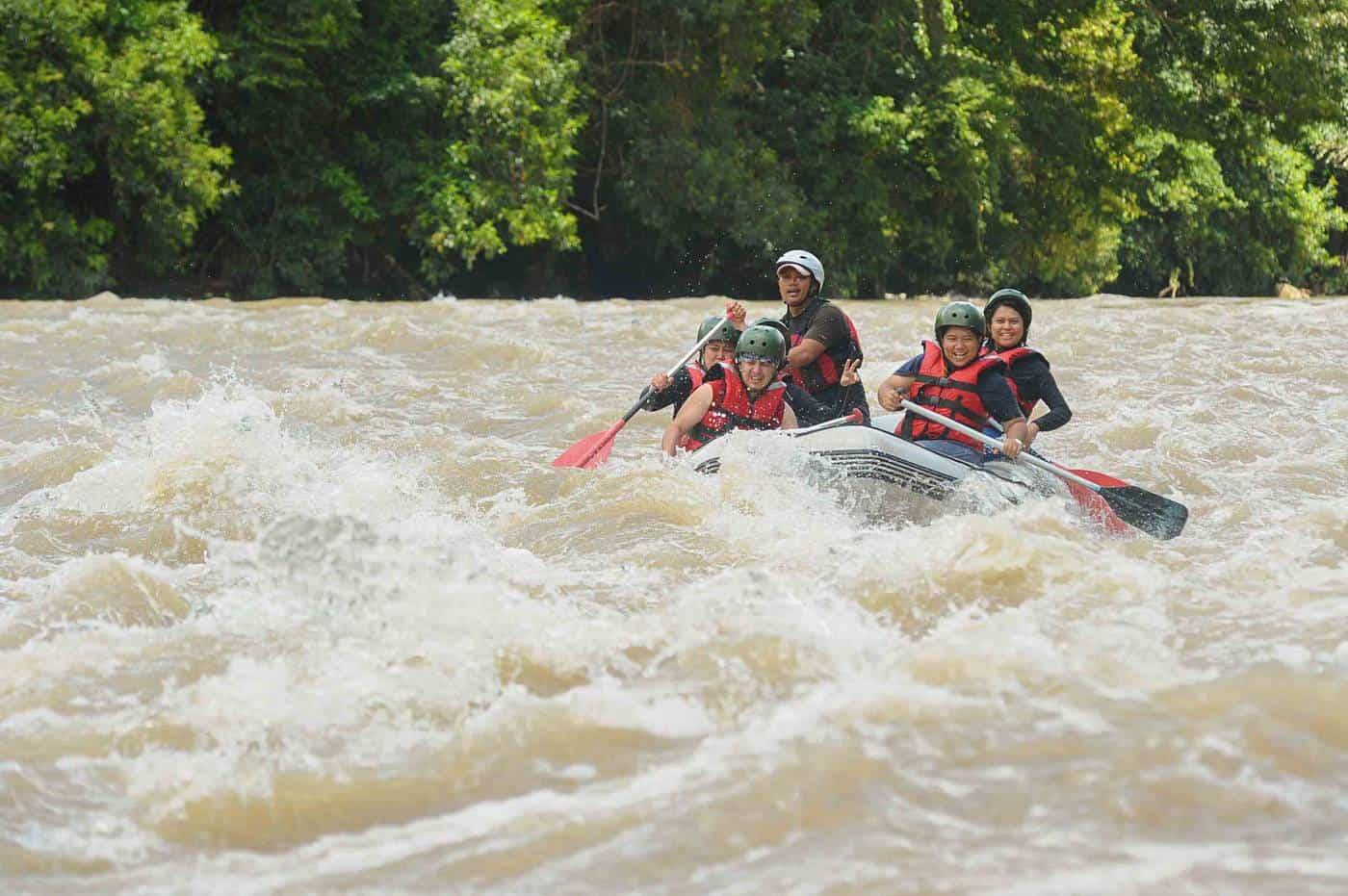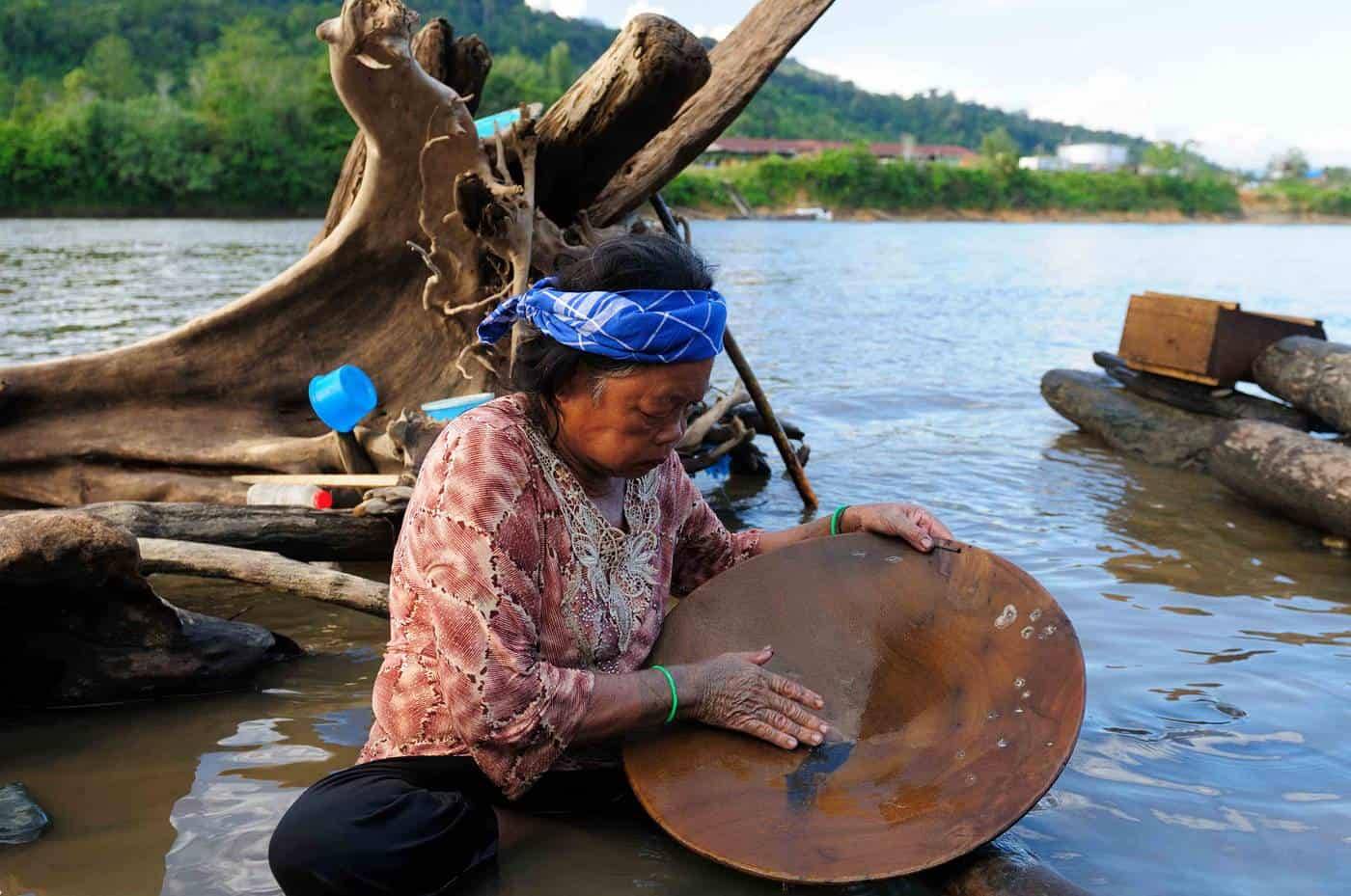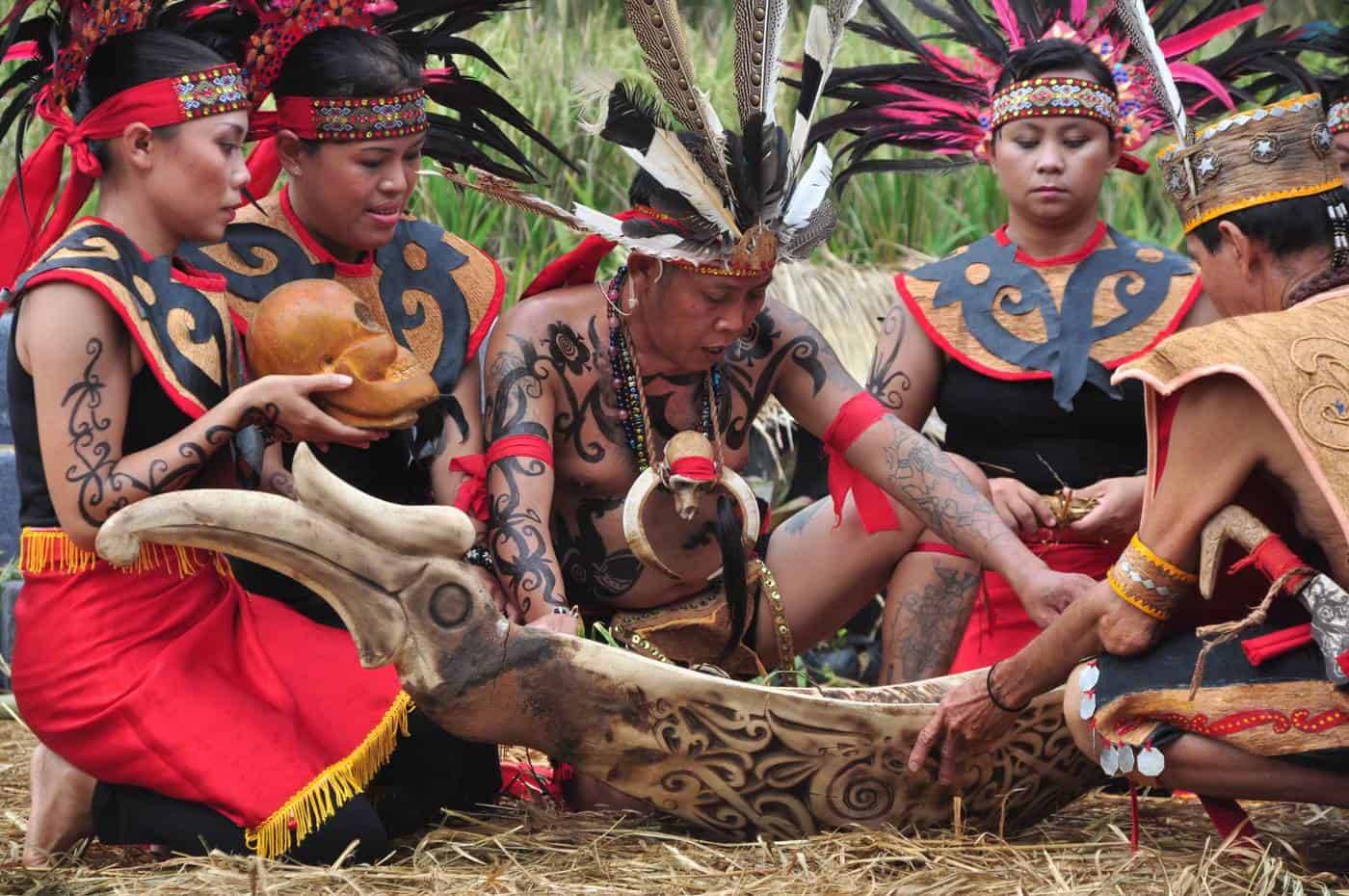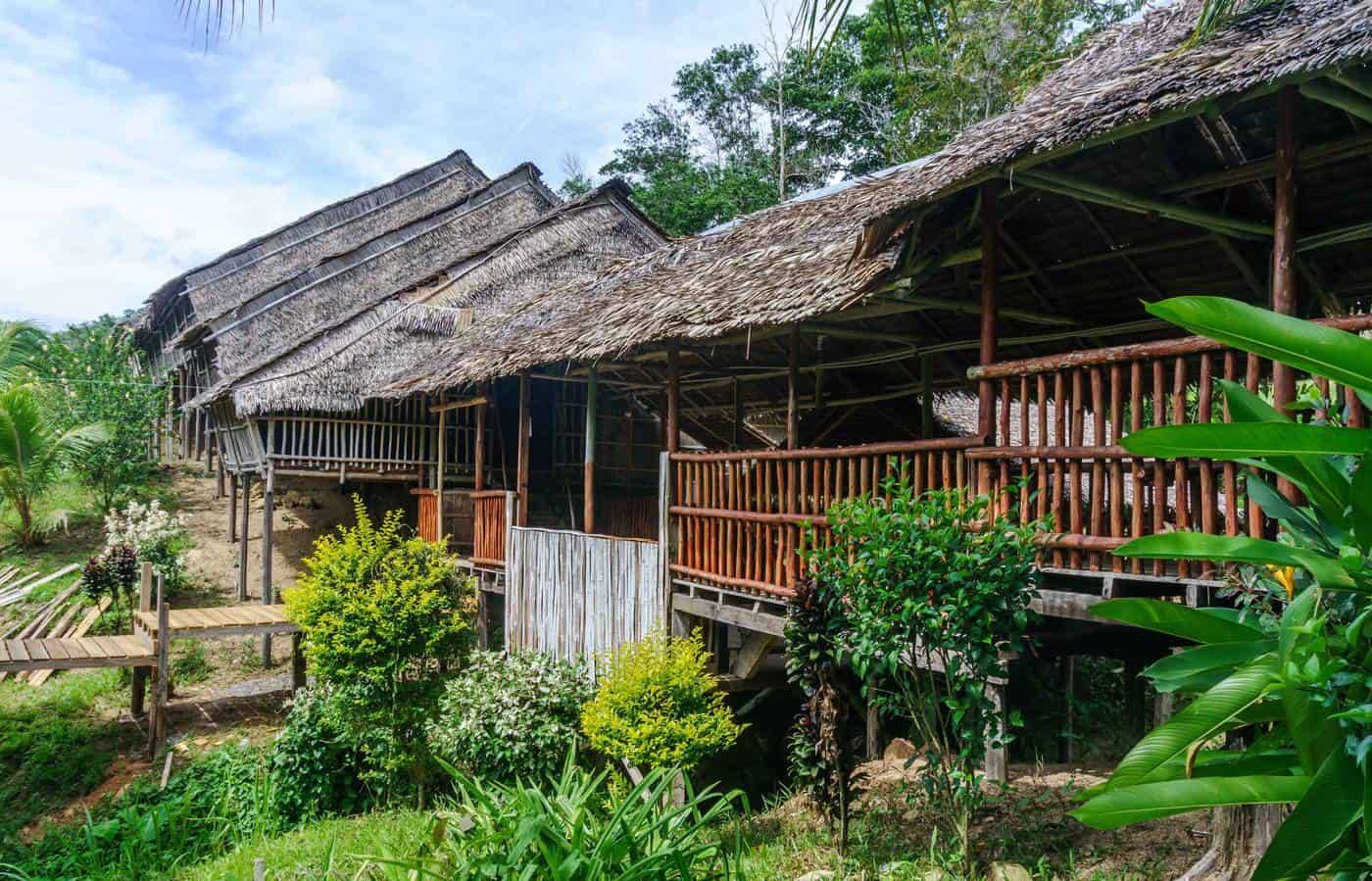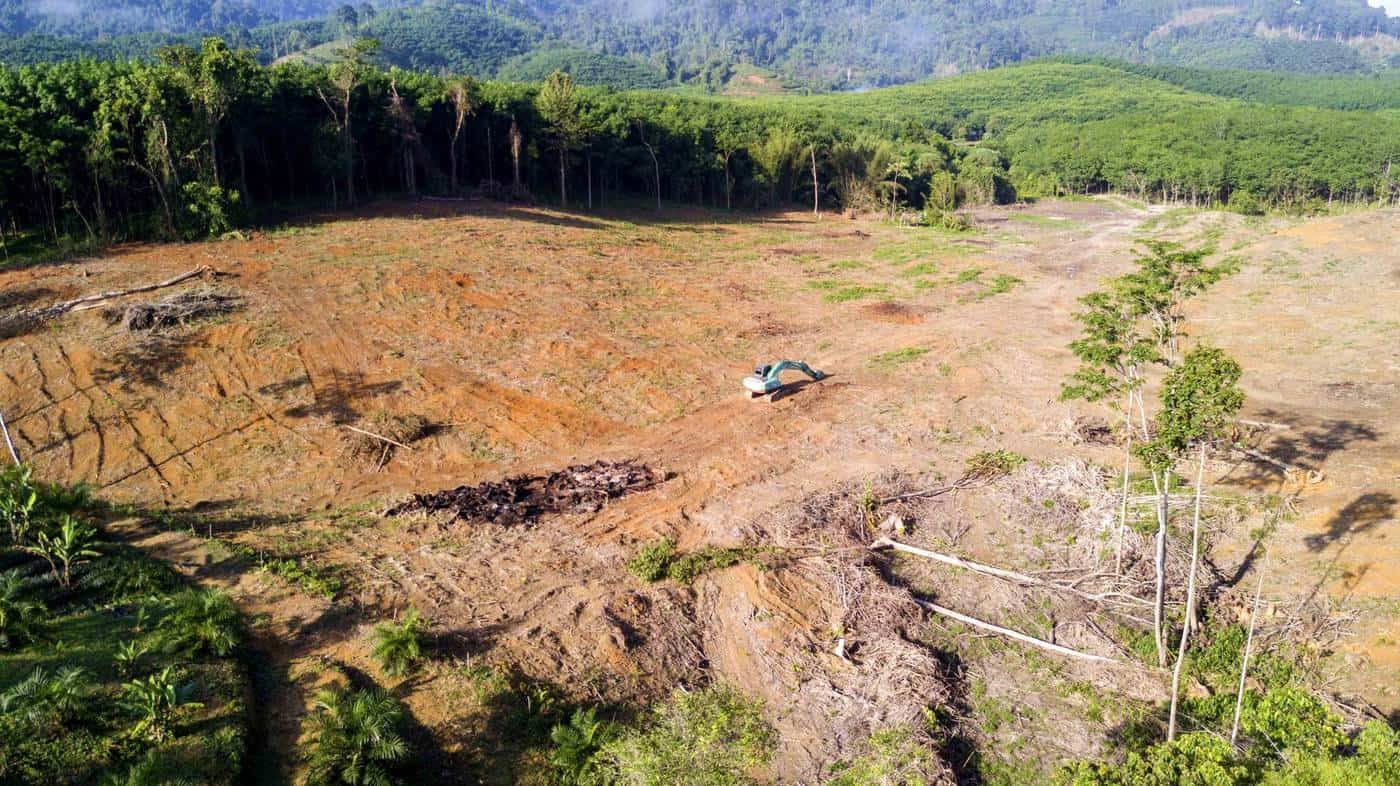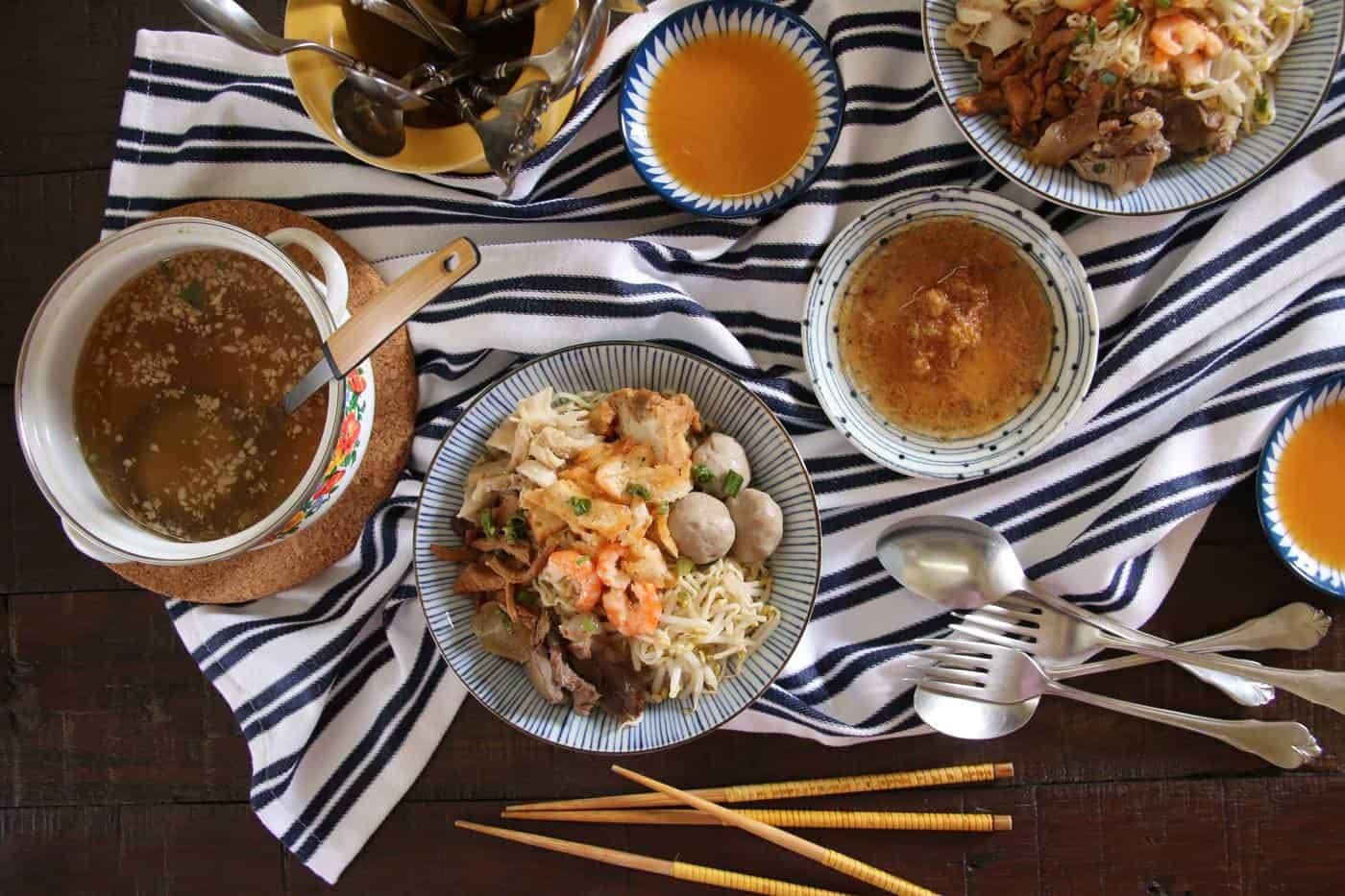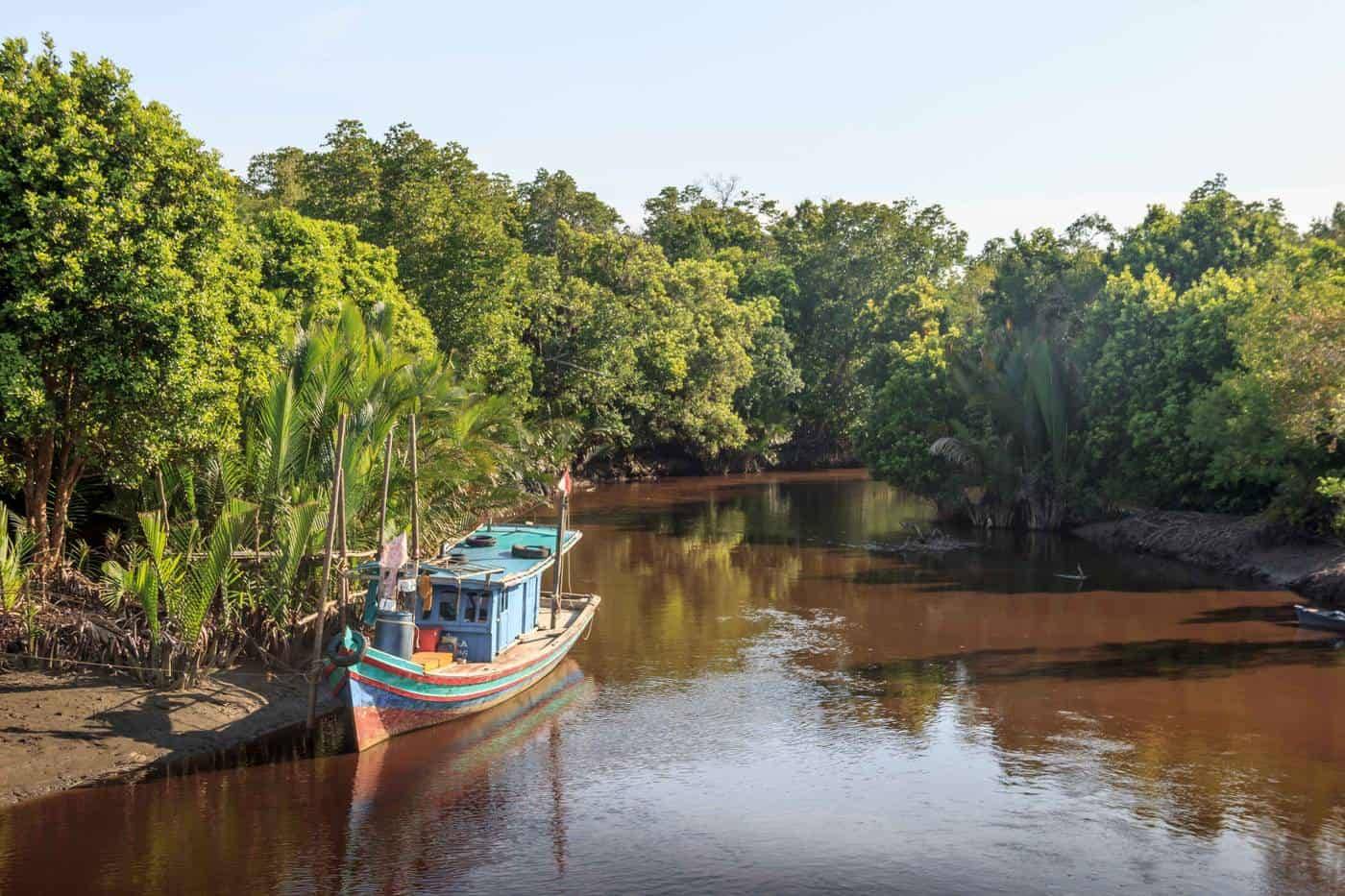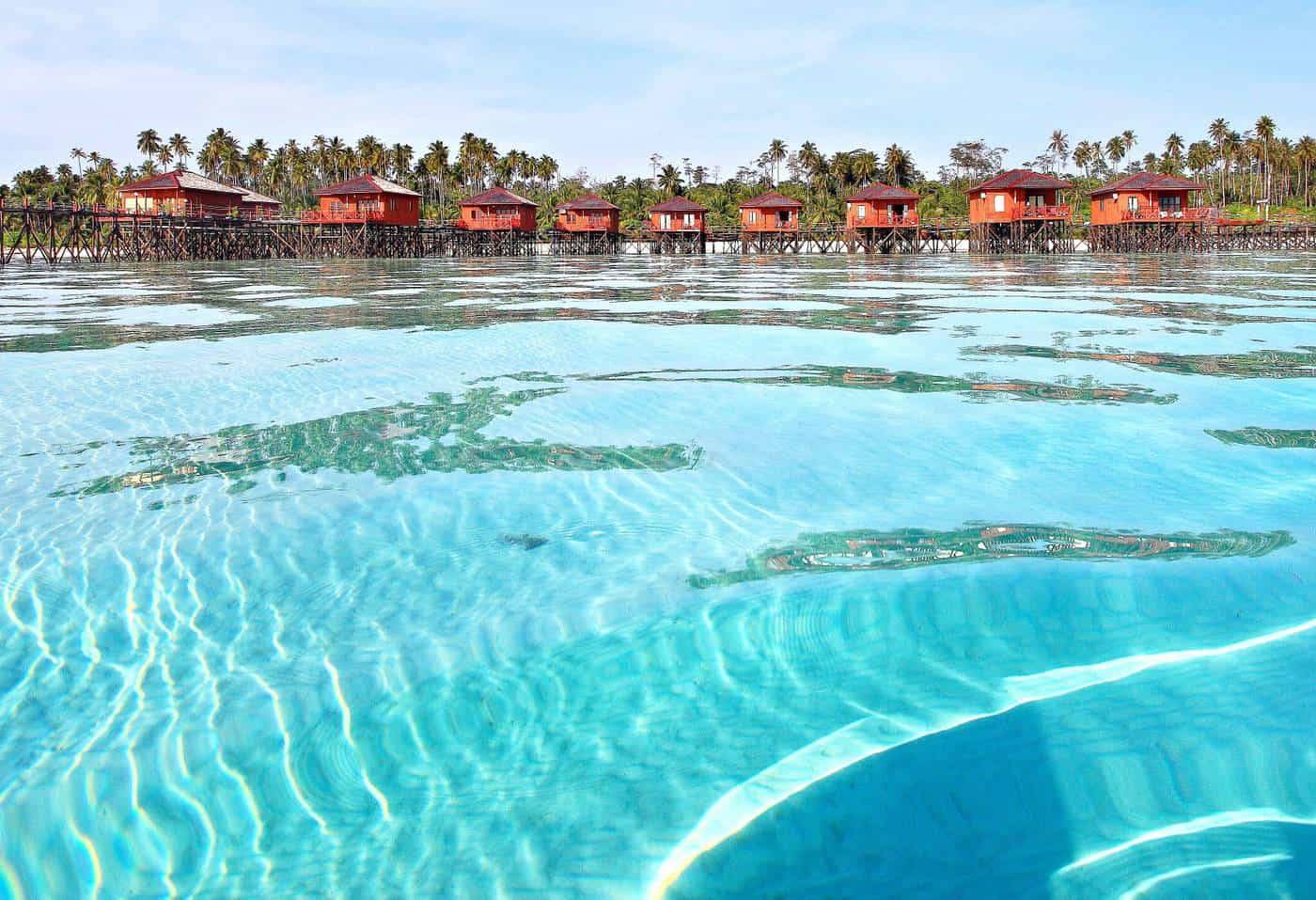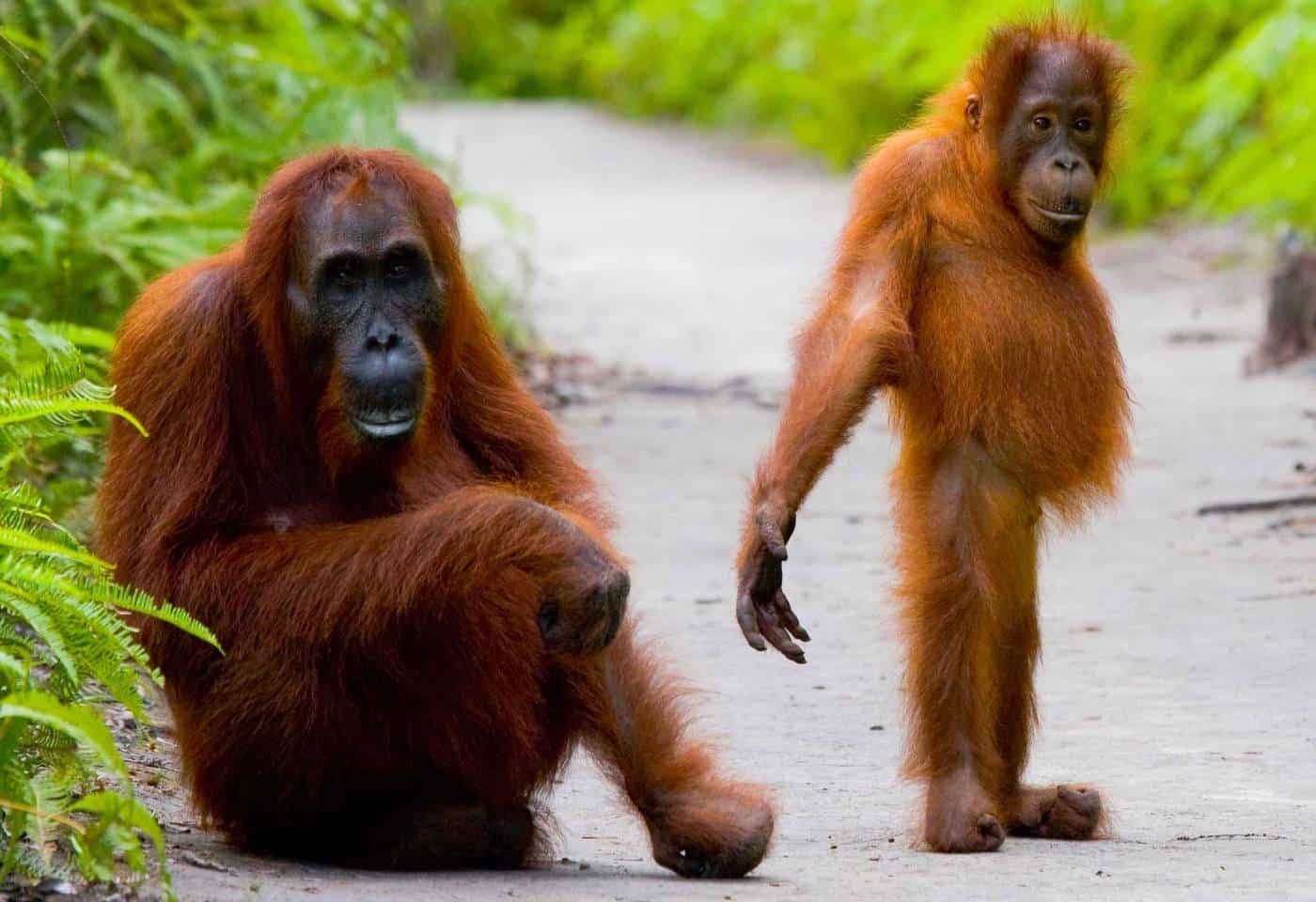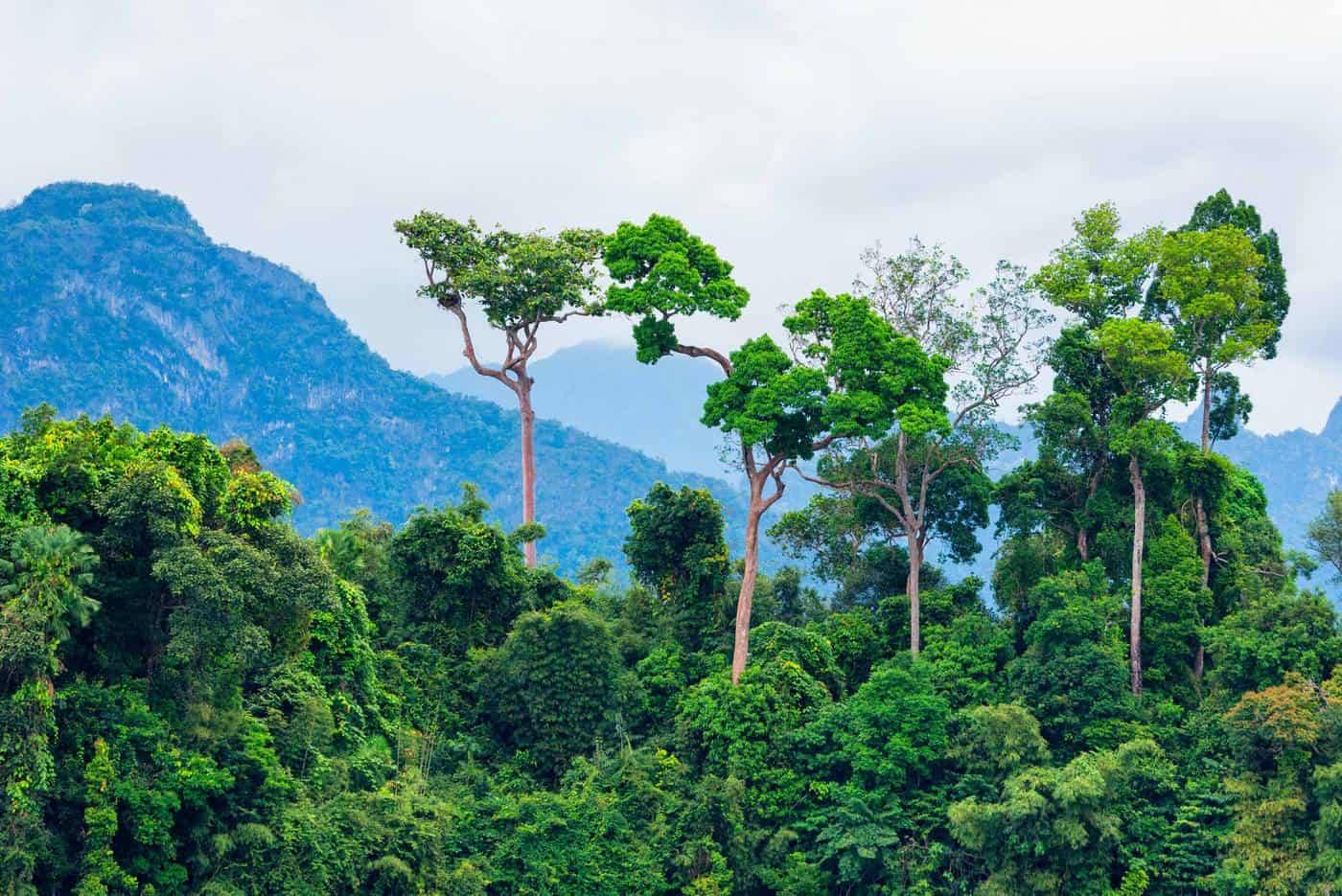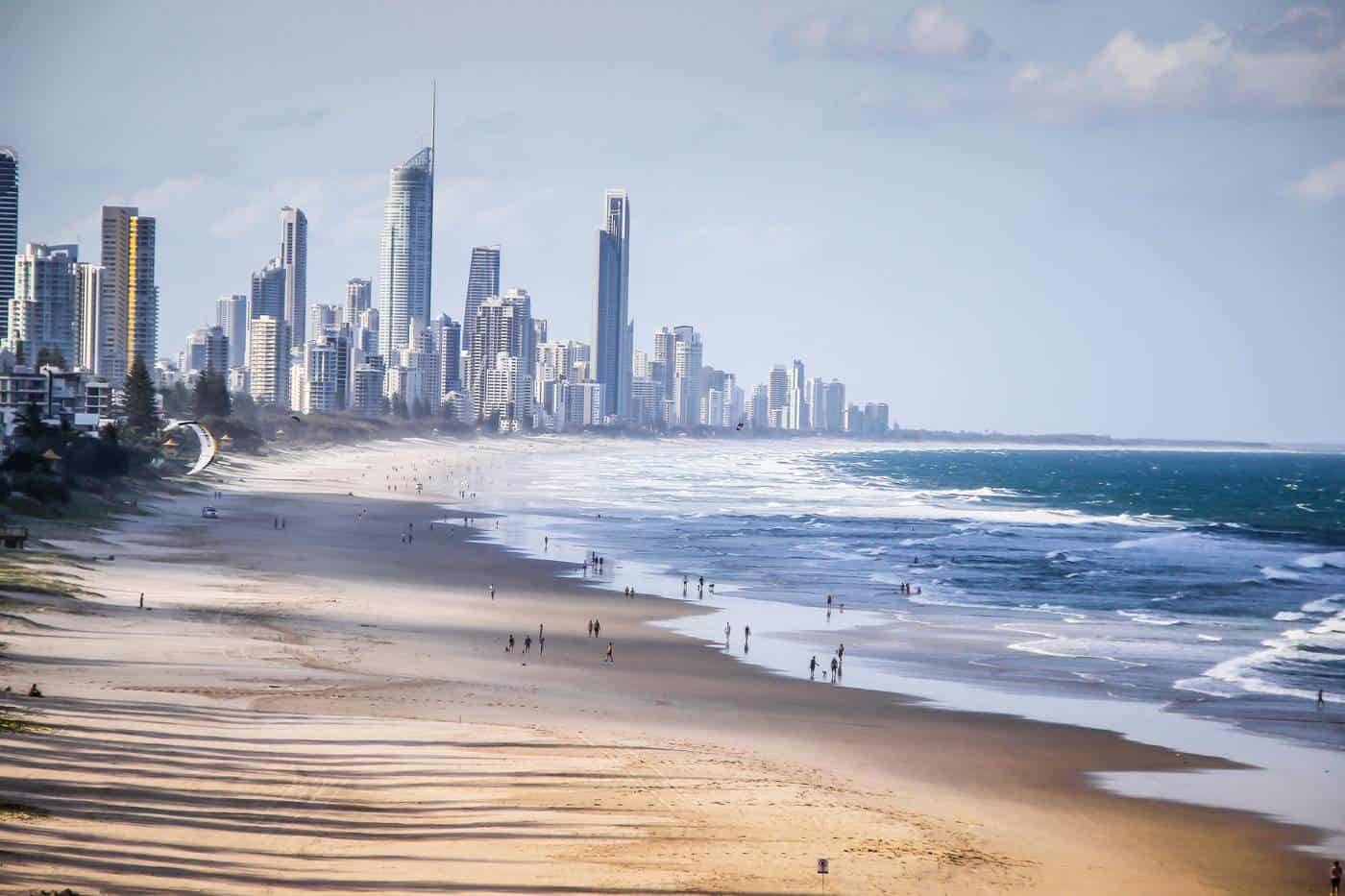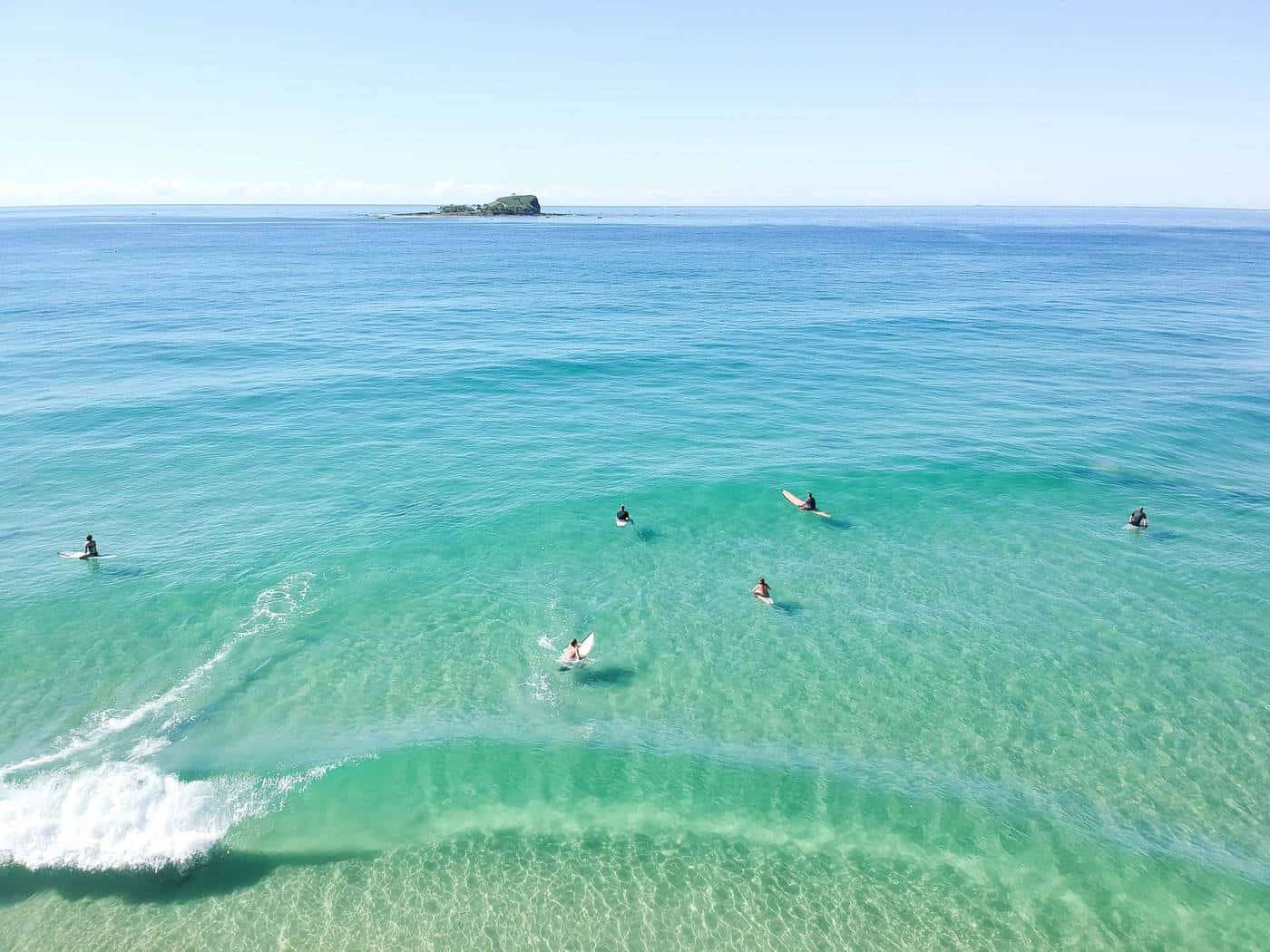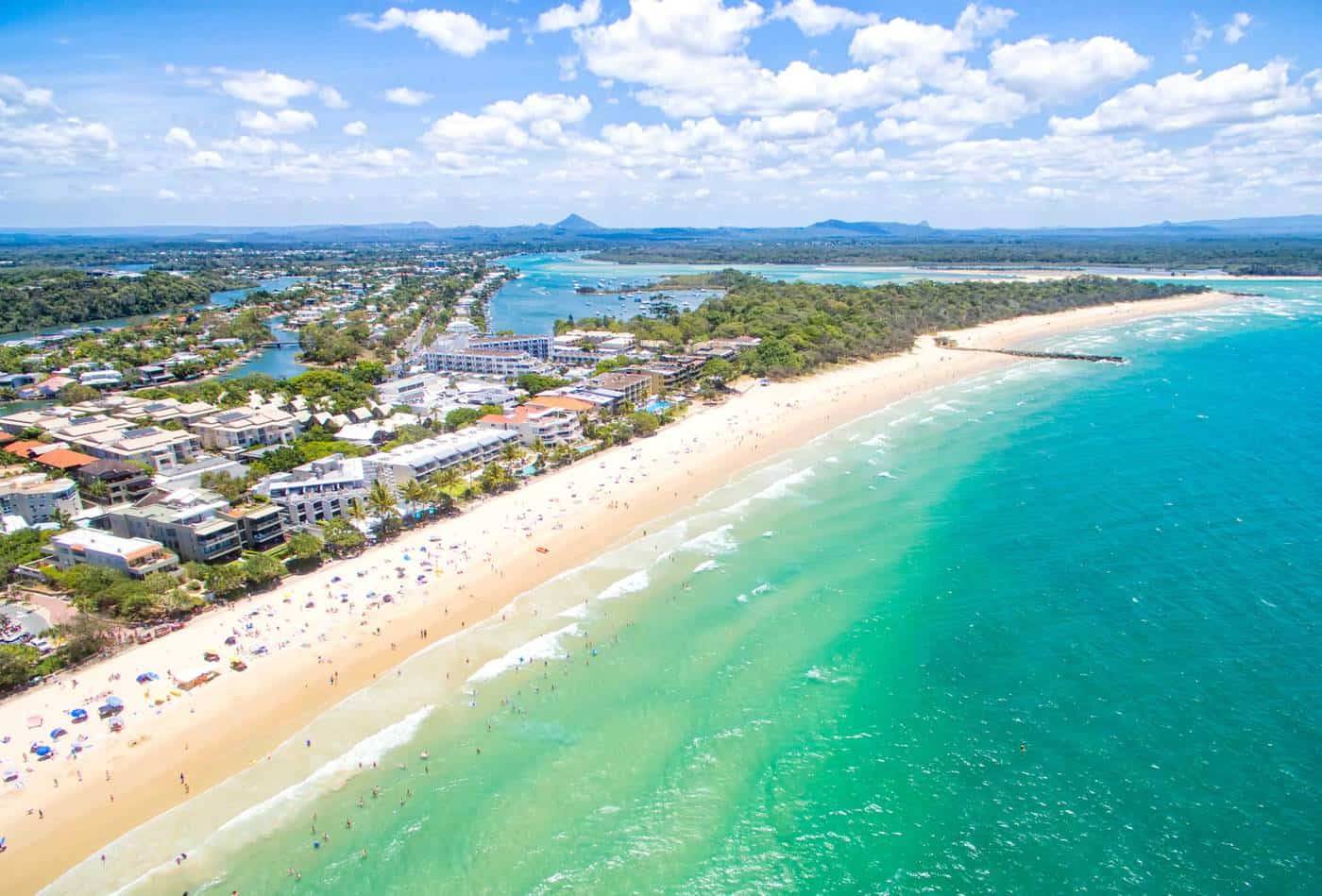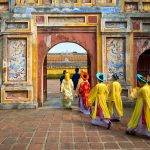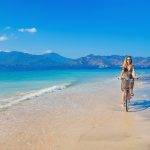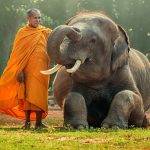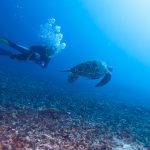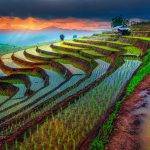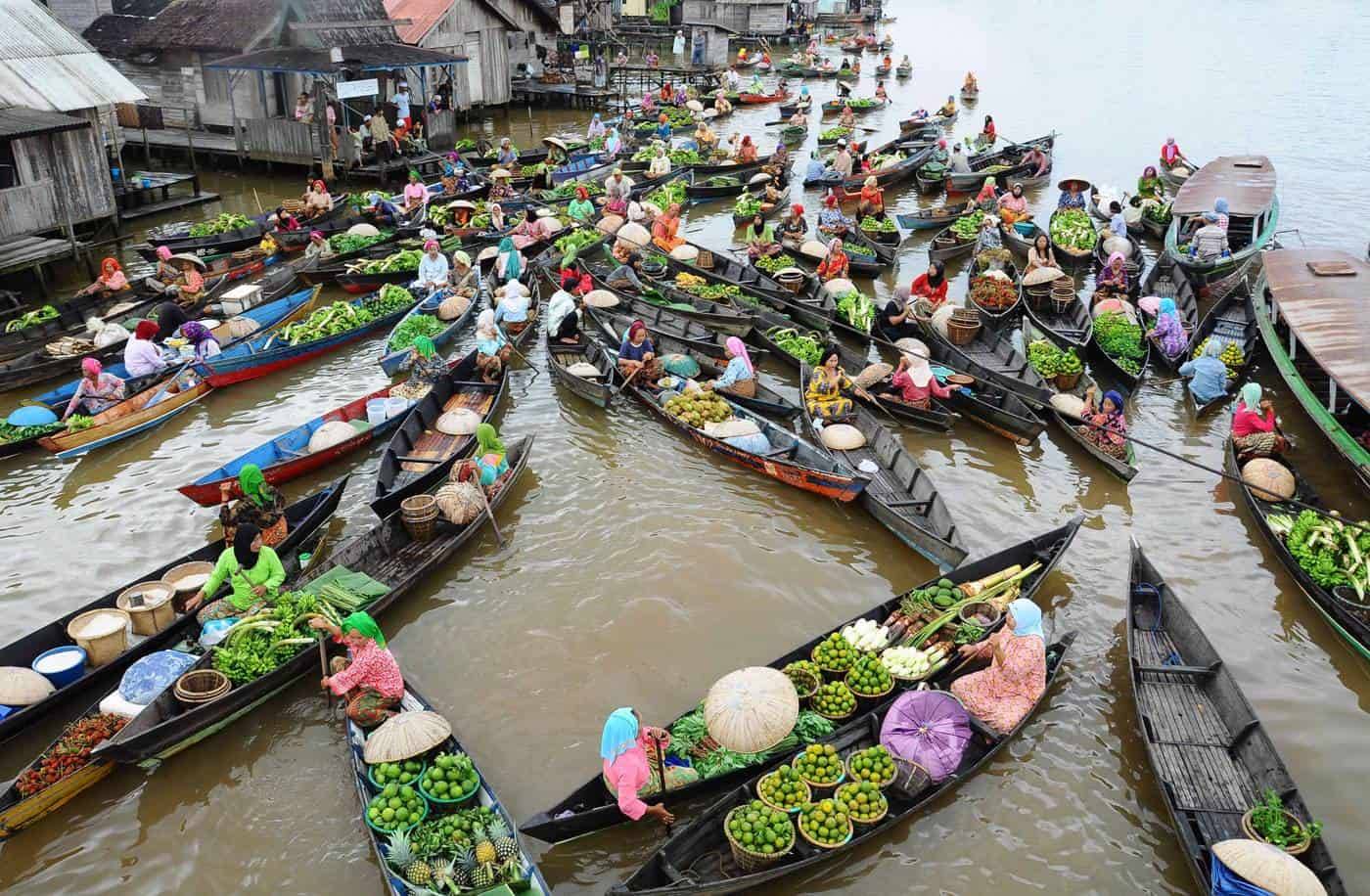
SOUTH KALIMANTAN ‘THE FLOATING SULTANATE’
BANJARMASIN
The distinct city of Banjarmasin is set on a web of the canals of the Martapura River, and it is lined with stilt houses and mosques.
The town has become a popular travel destination for its colourful boats, river navigators (klotoks), raft houses (lantings) and some of the world`s last remaining authentic floating markets.
Besides, the town is a renowned trade hub, particularly for rubies and diamonds that are exquisitely brilliant.
The busiest part of Banjarmasin is its sprawling riverfront and markets, yet there are also quite a few historical landmarks and interesting museums to visit.
Also called the ‘River City’ (for its far-reaching waterways) Banjarmasin has got a long Buddhist and Hindu history. The ancient kingdoms converted to Islam in 1526, however, and the South Kalimantan`s population today is almost entirely Muslim.
Banjarmasin is the largest city in Kalimantan with an important regional airport and domestic ferry terminal, where most of the visitors heading to the iconic Tanjung Putting National Park will arrive.
Although many would rush to see the major attraction of Borneo – orang-utan, it is recommended to stay for a few days. Banjarmasin truly fascinates.
ESSENTIAL EXPERIENCES IN BANJARMASIN
- Mosques – Sabilal Muhtadin Mosque (main city landmark) and Masjid Sultan Suriansyah (more than 300 years old)
- Museums – Museum Waja Sampai Ka Putting, Wasaka Museum are well-recommended
- Floating markets – Pasar Terapung, Lok Baintan, Kuin (these are must-see!)
- Beaches – Angsana Beach, Pagatan Beach, Takisung Beach (to get there flag down a bemo or rent a scooter and self-drive)
- Kembang Flower Island – abundant birdlife, long-tailed macaques (they can be fed by the visitors), Chinese Temple
- Kaget Surprised Island – watch the peculiar long-nosed monkeys
- Remember to try the local Banjarese cuisine – it is extraordinary!
- Cempaka mine – visit one of the largest diamond mines on earth and buy the local jewellery at the Martapura market (access from Martapura)
DID YOU KNOW?
The Cempaka mine near Banjarmasin is one of the world`s largest diamond mines estimated to have reserves of more than 33 million carats of diamonds.
Discovered in the 18th century by the Dutch the mine has a long history and it has become a popular tourist attraction. It is said that a precious 367-carat diamond called Matan was found here in 1789.
LOKSADO
The coastal plains of South Kalimantan are beautifully backed up by the Meratus Mountains, with the highest peak Mount Besar (1892 m).
The ranges are home to orang-utan and the semi-nomadic Meratus-Dayak tribe, yet both communities are slowly disappearing. With pleasant temperature, clear rivers and preserved forest Loksado makes a perfect escape from the hustle and bustle of Banjarmasin.
The small village of Loksado is a tourist hub with simple accommodation but fabulous hiking trails, suspension bridges, jungle treks to waterfalls and outlying Dayak settlements. There are various river activities, safari tours and jungle expeditions available for tourists.
Traditional bamboo rafting is one of the most popular activities, starting from Kandangan (you can either get there by scooter in about 4 hours or on foot within 8 hours). The Amandit River can be pretty rough at some sections, with several rapids (ranging from grade 1 to 3).
ESSENTIAL EXPERIENCES AROUND LOKSADO
- Amandit River – bamboo rafting is the most popular activity (from Kandangang)
- Meratus Mountains – hiking Gunung Besar (it is a 2-day hike from Loksado, and a local guide is essential overnight camping), Langara Hill ( a one day hike)
- Loksado Walks – follow the Amandit river upstream to find several waterfalls, Malaris village has nice longhouse and waterfall and very nice walks start at the Harati village, the village of Muara Tanuhi is 2 hours downstream the river
- Dayak Villages – there are several homestays in Loksado (permit required, cash donation expected), e.g. most of the villages mentioned above offer accommodation and eco-tours
- Nagara Wetland – take a boat to search around the traditional fishing villages
- Amuntai – Candi Agung temple, Buffalo race in Bararawa and Sepala villages (August)
MUARA TEWEH (BARITO RIVER TOURS)
Barito River meanders from the heart of Borneo, 900 kilometres through entire Central Kalimantan, to join the Java Sea at Kualakapuas and Banjarmasin.
The river can be travelled upstream from either of the towns by booking a boat tour. There are several interesting towns and Dayak villages to stop by on the way as well as plenty of natural attractions to enjoy albeit this is one of the Borneo`s least trodden paths (perfect for adventure seekers).
In South Barito, the lush forest of Buntok provides shelter for colourful birdlife, various monkey species and reptiles, and the local caves, rivers and waterfalls offer ideal conditions for outdoor activities.
Further north, Muara Teweh is one of the remotest towns in Kalimantan, yet surprisingly large and busy. While the town might not be extraordinarily charming, there are many natural and cultural attractions around.
The northernmost Barito territories (past Puruk Cahu) are defined by stunning scenery and adrenaline activities; e.g. Teluk Jolo and Tumbung Juloi are known for river rafting, kayaking and jungle trekking.
ESSENTIAL EXPERIENCES ALONG THE BARITO RIVER
- Buntok – Lake Melawen (ideal for wildlife watching, fishing)
- Tamiang Layang – Liang Sarangih is anan ancient limestone cave with numerous tunnels
- Muara Teweh – Makonjun Longhouse is an old Dayak betang in the Makonjun village (2 hrs by motorboat from Muara Teweh)
- Puruk Cahu – historical forts, longhouses, wildlife and jungle trekking tours (Poran and Koloubesar waterfalls), Labung & Masuparia villages (diamond & gold panning), black orchid park and wildlife reserve
- Teluk Jolo & Tumbung Juloi – canoeing, kayaking, traditional bamboo rafting, jungle trekking and eco-tourism (outlying Dayak communities can be visited)
THE DAYAK TRIBES
The aboriginal hill-tribes of Dayak are one of the major reasons to visit Borneo. More than 200 of these native ethnic subgroups occupy the interior parts of the island, living in isolation and still today cultivating animism.
Once notorious warriors, known as ‘The Headhunters’ but also some of the world`s oldest ‘Tattoo Artists’, today these friendly communities happily greet the ‘rich’ Westerners within their jungle-territories, and anyone who brings some gain is welcome to stay at their famous longhouses and watch cultural performances.
There are still genuine Dayak communities that dwell deep at the heart of Borneo albeit most of the villages available to visit are living museums and quite sadly sort of ‘human zoos’.
THE DILEMMA OF ECO-TOURISM
National parks of Kalimantan have often been an object of discussion due to the past logging and still present illegal forestry. Borneo was gifted with some of the most biologically diverse habitats on Earth and also the world`s oldest rainforest. The extensive deforestation, caused by rapid industrialisation, started in the 1960s.
Since then, Borneo has undergone a dramatic transformation, and even though there were several attempts to stop these activities, illegal logging is still a big topic.
Naturally, the fast-growing tourism, especially the eco-tourism industry, does not help to prevent this from happening. Tourism not only indirectly encourages the deforestation (building new facilities, providing tours into the previously untouched areas) but also contributes to disappearing of the indigenous Dayak culture and their traditions, and it ultimately affects the future of orang-utans and other endangered species.
Therefore, every visitor is strongly advised to do some research and re-consider the concept of eco-tourism prior to travelling.
USEFUL TRAVEL TIPS
Religion – Borneo is predominantly a Muslim enclave, and conservative dress is expected at all times, especially women. Many female travellers reported situations when they felt extremely uncomfortable in some places. Besides, when travelling to the indigenous regions and Dayak villages every visitor should make themselves familiar with the local customs and follow the etiquette.
Health – There is a high risk of Malaria in Kalimantan, particularly during the rainy season (Dec-Feb). Vaccinations such as Hepatitis A, B and Tetanus are recommended. In some cases, the Yellow Fever Immunisation is required (check with your national health policies).
Transport – The only way how to get around Kalimantan is using public buses and boats (unless booking a private tour). However, this can sometimes be a gruelling experience – distances are huge, the roads tortuous and the driving hair-raising. On the other hand, it is part of the Bornean travel adventure.
Food – Kalimantan is strongly influenced by both the Chinese and Malay cuisines, hence noodles, soups and satays are popular dishes at all warungs. Chicken, fish, eggs and rice can be found on the everyday menu at most of the families and durian is the favourite fruit. Remember that the Indonesians like it hot & spicy!
Alcohol is fairly limited in Borneo
KLOTOK BOATS
Most of the river tours use the local klotok boats, specially designed navigators that can move efficiently in the narrow and often shallow rivers. Since they can access some of the least accessible places in the jungles and swamps, they started to be used in tourism as the major transport – an ideal way to spot wildlife from a very close distance.
TRAVELLING IN KALIMANTAN
Kalimantan is not a cheap place to travel at all. The locals know the value of their land and the Westerners too persistent in seeking for exciting jungle ventures. Hence that reflects in prices and also in the type of travelling here – most of the time visitors will need some help of the local guides or tour agencies.
Independent travellers who look for an ‘out of comfort zone’ trip will surely find their needs satisfied as it is quite a mission to explore the wilderness of Borneo on your own and it requires patience, good planning and lots of time.
NOTE To enter any national park and protected area in Kalimantan you will need to purchase a permit at one of the local tourist offices.

It can be challenging to move around Kalimantan, boats are the main means of transport even in big towns and cities
WHEN TO TRAVEL
The Indonesian Borneo (Kalimantan) is generally recommended to visit between June and October, during the dry season.
Especially, wildlife spotting and eco-tourism are dependent on good weather. In fact, many reserves and protected areas are only accessible outside of the rainy season.
HOW TO GET HERE
Fly to Banjarmasin (flights from Java/Bali)
To Tanjung Puting National Park/Camp Leakey: fly directly to the Pangkalan Bun Airport (regional flights also available from Pontianak and Banjarmasin). Otherwise, book a boat tour in Kumai
To Loksado: catch a bus or hire a bemo from Banjarmasin to Loksado (3 hours drive)
To Muara Teweh: by road from Samarinda (one day journey) or Palangka Raya (13 hrs trip drive or a multi-day boat tour). Alternatively, use Beringinn Airport in Muara Teweh for a domestic flight.
For all domestic flights check out the Indonesian flight companies Wings Air, Susi Air, Kartika Airlines, Lion Air, Silk Air, Sriwijaya Air and Garuda Indonesia
For all international flights go to www.momondo.com or www.skyscanner.com
